SAP Operating Systems
Filter By
Browse By
- SAP Analytics and AI
- SAP Application Development and Integration
- All SAP Application Development and Integration
- SAP ABAP
- SAP ABAP Development Tools
- SAP ABAP Test Cockpit
- SAP API Management
- SAP BAPI
- SAP Basis
- SAP BRF
- SAP Business Application Studio
- SAP CMS
- SAP Design Studio
- SAP Development Tools
- SAP DevOps
- SAP EAI
- SAP EDI
- SAP Extension Suite
- SAP Fiori
- SAP Fiori Elements
- SAP Integration Suite
- SAP Low Code Application Development
- SAP Low Code Automation
- SAP Netweaver
- SAP Release Management
- SAP UI5
- SAP Web Application Server
- SAP Web IDE
- SAP Business Process Management
- SAP Center of Excellence
- SAP CIO
- SAP Customer Experience
- SAP Data and Data Management
- All SAP Data and Data Management
- SAP BW
- SAP BW/4HANA
- SAP Crystal Reporting
- SAP Data Archiving
- SAP Data Center
- SAP Data Governance
- SAP Data Integration
- SAP Data Migration
- SAP Data Quality
- SAP Data Services
- SAP Data Strategy
- SAP Data Visualization
- SAP Data Warehouse Cloud
- SAP DMS
- SAP Document Control
- SAP EIM
- SAP ETL
- SAP ETL Tools
- SAP HANA
- SAP HANA Administration
- SAP HANA Deployment Infrastructure
- SAP HANA Studio
- SAP Master Data
- SAP Master Data Governance
- SAP MDM
- SAP Enterprise Architect
- SAP Enterprise Asset Management
- SAP ERP
- SAP Finance
- All SAP Finance
- SAP Accounting
- SAP AR AP
- SAP Asset Accounting
- SAP Billing Systems
- SAP BPC
- SAP BRIM
- SAP Cash Management
- SAP Central Finance
- SAP Controlling
- SAP COPA
- SAP Cost Center Accounting
- SAP e-invoicing
- SAP FICO
- SAP Finance Automation
- SAP Financial Closing Cockpit
- SAP Financial Consolidation
- SAP Financial Planning
- SAP FX Risk
- SAP General Ledger
- SAP Global Tax Management
- SAP Hyperion
- SAP Order to Cash
- SAP Payment Processing
- SAP Profitability Analysis
- SAP Rebate Management
- SAP S/4HANA Finance
- SAP Universal Journal
- SAP Governance Risk and Compliance
- SAP Human Capital Management
- SAP Intelligent Technologies
- SAP Platform and Technology
- All SAP Platform and Technology
- SAP Business Technology Platform
- SAP Cloud Connector
- SAP Cloud Integration Platform
- SAP Cloud Migration
- SAP Cloud Platform
- SAP Cloud Providers
- SAP Cloud Strategy
- SAP Container Platform
- SAP Digital Asset Management
- SAP Digital Integration Hub
- SAP Digital Signature
- SAP HANA Enterprise Cloud
- SAP HEC
- SAP Hyperscalers
- SAP Infrastructure
- SAP Messaging
- SAP Smart Forms
- SAP Quality and Testing
- SAP Security
- SAP Spend Management
- SAP Supply Chain Management
- All SAP Supply Chain Management
- SAP APO
- SAP Asset Management
- SAP Business Network
- SAP Digital Manufacturing Cloud
- SAP Digital Twin
- SAP EWM
- SAP IBP
- SAP Inventory Management
- SAP Label Printing
- SAP Logistics
- SAP Manufacturing
- SAP Manufacturing Automation
- SAP MES
- SAP MII
- SAP MM
- SAP MRO
- SAP MRP
- SAP Order Management
- SAP Plant Maintenance
- SAP PLM
- SAP Production Planning
- SAP S&OP
- SAP SD
- SAP SPM
- SAP Supply Chain Planning
- SAP Track and Trace
- SAP Transportation Management
- SAP System Administration
What Is an Operating System?
An operating system (OS) is software that enables applications to interface with a computer or server. The OS makes a system’s hardware accessible to an application while providing essential services to applications in the process. OS features include memory management, crash recovery, patch management, security, and clustering capabilities.
What Is an Operating System?
An operating system (OS) is software that enables applications to interface with a computer or server. The OS makes a system’s hardware accessible to an application while providing essential services to applications in the process. OS features include memory management, crash recovery, patch management, security, and clustering capabilities.
What Are SAP Operating Systems?
Microsoft Windows Server, Red Hat Enterprise Linux (RHEL), SUSE Linux Enterprise Server for SAP Applications (SLES), and UNIX variants (HP-UX, AIX, and Solaris) are common OSes used in SAP environments. IBM iSeries or AS/400 (running OS400) or mainframe (running z/OS) can also be found supporting SAP. However, SAP HANA only runs on the Linux OS, and SAP application development requires a Linux OS or Windows Server.
For SAP customers, an OS is a set of executables and libraries that allow users through various front ends to connect to application servers to submit data to and retrieve data from an SAP database. SAP starts multiple OS-level services and processes, efficiently using a server’s available memory and CPU power. SAP generally only supports 64-bit OS environments.
At the OS level, SAP has eight work process types: dialog, background, synchronous update, asynchronous update, enqueue, message, spool, and gateway. In addition, SAP contains three OS-level profiles: default, start, and instance. Profiles are essentially text files imported into and maintained by the SAP database. The default profile has information common to all SAP instances in an SAP system.
Further Resources for SAPinsiders
What to Expect from the Move to Linux. Companies looking to benefit from SAP HANA need to migrate their OS to a Linux platform before implementing the in-memory database. This article provides advice on tools and training to ease migration.
Linux Eases the Migration Path to SAP S/4HANA. Moving to SAP S/4HANA provides an opportunity for organizations to take advantage of the benefits of Linux. This article argues that Linux ensures a sustainable move to SAP S/4HANA, even for companies that rely on UNIX or Microsoft.
How to Dynamically Load Multiple Files from SAP NetWeaver Application Server (Unix). In this article, Thiagu Bala, Owner of Aster Logic and an SAP-certified consultant, explains how SAP customers can save time and avoid risks by using an ABAP program and process chains to load multiple flat file data into SAP NetWeaver BW using Unix code.
1312 results
-

Get the Most Out of SAPSprint for Server-Based Printing in Microsoft Windows
Published: 22/April/2009
Reading time: 19 mins
SAPSprint is the latest service for server-based printing on Windows. Learn how to install and configure this service with its default options. Drill down into the technical implementation to learn how to manage print requests, restart print processes, configure front-end printing, and include barcodes. Key Concept Processing in SAPSprint means generating print data via the...…
-

Revealing a New Type of Profitability Analysis (CO-PA): Combined CO-PA
Published: 02/August/2017
Reading time: 15 mins
Learn how to activate and configure combined Profitability Analysis (CO-PA). Key Concept Combined Profitability Analysis (CO-PA) is a new form of CO-PA that uses value fields that can be mapped back to general ledger (G/L) accounts. SAP is introducing a new form of Profitability Analysis (CO-PA), combined CO-PA. Combined CO-PA reveals a lot of new...…
-

Configure SAPSprint for Secure Server-Based Printing on Windows
Published: 17/June/2009
Reading time: 146 mins
You can have as wide and varied a range of printing needs as you have business needs. Learn about the available SAPSprint options — what they are and what they do — so you can help your organization meet its specific printing needs. Key Concept Secure Network Communications (SNC) integrates an external security product with...…
-
-

Technical Considerations for Executing an SAPUI5 Project
Published: 05/April/2016
Reading time: 22 mins
Follow these best practices and tips outlined by Ameya Pimpalgaonkar if you are planning to execute an SAPUI5 project. See how an SAPUI5 project differs from a traditional project and why the design process is essential if you want to avoid technical errors. Key Concept It is essential that all SAPUI5 projects begin with a...…
-

Utility Program ESMON Improves System Performance by Allowing You to Analyze Memory Allocation
Published: 08/April/2011
Reading time: 19 mins
Efficient analysis of memory allocation to SAP users is really important. The utility program ESMON is all about tracking down every detail of memory that is being used. See how to analyze any memory leak or blocked memory using ESMON. Key Concept ESMON is the utility program that tells you every detail of memory allocated...…
-

From Complexity to Intelligence: Scaling Enterprise AI with SAP Business AI, SAP Databricks, and DXC Technology
Published: 14/March/2025
Reading time: 6 mins
This article discusses how DXC Technology leverages over 30 years of partnership with SAP to help enterprises effectively implement and scale AI solutions, such as SAP Business AI and SAP Databricks, overcoming challenges like data silos and governance issues to drive significant business transformation.
-

Troubleshoot the Three SAPSprint Root Error Categories for Server-Based Printing on Windows
Published: 29/October/2009
Reading time: 17 mins
A failed printout can delay or disrupt important meetings or cause you to miss deadlines. See how to avoid printer failures when using SAPSprint by analyzing the three most common types of errors. Also find answers to common SAPSprint issues in the SAPSprint FAQs. Key Concept Processing in SAPSprint involves generating print data via the...…
-
-

Uncover New Insight into Your Customers with mySAP CRM Analytics
Published: 15/August/2006
Reading time: 27 mins
Find out how mySAP CRM Analytics, a group of tools offered with mySAP CRM 2005 and SAP NetWeaver Business Intelligence to help you optimize your customer data. Learn about the mySAP CRM extraction mechanism and cross-application analysis tools you can use with your data. Then, explore the standard tool sets available, including customer analytics, product...…
-

Vodafone Goes Mobile with One of the World’s Biggest SAP ERP Rollouts
Published: 01/October/2012
Reading time: 10 mins
Mobile service provider Vodafone Group has grown tremendously since its creation 27 years ago. And in today’s booming mobile market, there is no foreseeable end in sight. But to continue to grow as a company, Vodafone needed to function more like a single entity, with common practices, centralized operations, and data sharing between operating companies.
-

Virtualization and SAP: What You Should Know Before Your Upgrade
Published: 29/June/2010
Reading time: 8 mins
ManagementVirtualization is no longer a new concept for most SAP companies, yet many are just getting on the bandwagon. SAP upgrade expert Lon Blake explains several virtualization options SAP project teams should consider, and how they can get the most out of the SAP Adaptive Computing Controller — SAP’s customized approach to virtualization. As SAP...…
Become a Member
Unlimited access to thousands of resources for SAP-specific expertise that can only be found here.
Upcoming Events
Related Vendors
Your request has been successfully sent

